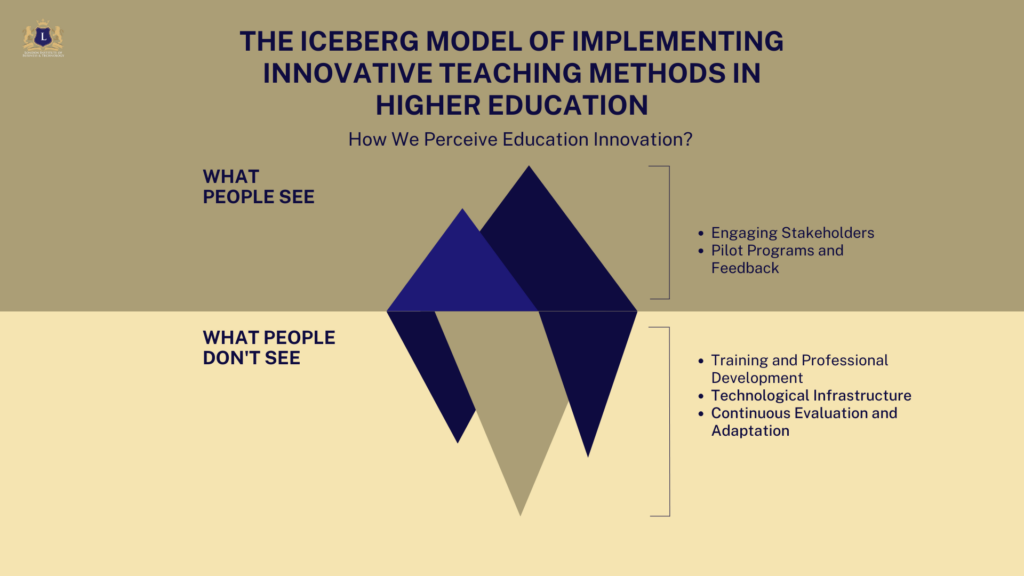Innovation in higher education is a critical element that is transforming how teaching and learning happen, as well as the way institutions operate. This significant trend, often called the “innovation wave,” describes the extensive changes and advancements currently reshaping colleges and universities worldwide. The impact of this wave is significant on various industries. For educational institutions, it’s essential to keep relevant in today’s world, ensuring they remain competitive, and enabling them to meet the varied needs of modern students. Additionally, it helps institutions adapt to the changing requirements of the global workforce.
What is Innovation in Higher Education?
Innovation in higher education encompasses a broad spectrum of changes and improvements as discussed in this article. This includes the adoption of new technologies, the implementation of novel teaching methodologies, the development of interdisciplinary programs, the fostering of a culture of research and entrepreneurship, and the enhancement of student services and campus facilities. It’s a dynamic process that not only integrates technological advancements but also embraces cultural, pedagogical, and operational shifts.
The Importance of the Innovation Wave
The innovation wave in higher education is critical for several reasons:
- Responding to Changing Student Needs: Today’s students, digital natives, expect a learning environment that integrates technology and offers flexibility, interactivity, and real-world relevance.
- Globalization and Diversity: As the world becomes more interconnected, educational institutions must adapt to cater to a diverse, global student body and prepare students for a globalized job market.
- Technological Advancements: The rapid development of technology necessitates its integration into the learning process, whether through digital classrooms, online learning platforms, or the use of AI and data analytics.
- Evolving Job Market: With the changing nature of work, institutions must prepare students with the skills and knowledge relevant to emerging industries and future careers.
- Research and Development: Innovation drives research and development, positioning institutions as leaders in discovering new knowledge and solutions to societal challenges.

6 Examples of Higher Education Institutions Leading the Innovation Wave
- Massachusetts Institute of Technology (MIT): MIT is often at the forefront of educational innovation, especially in technology and engineering fields. Its MITx platform is a prime example of pioneering online education, while its research initiatives continually push the boundaries of science and technology.
- Stanford University: Known for its entrepreneurial spirit, Stanford encourages innovation through initiatives like the Stanford Design School (d.school), which merges various disciplines to solve complex problems creatively and practically.
- The Open University, UK: As one of the first institutions to offer distance learning, The Open University has been a leader in online education. Its innovative approaches in making education accessible and flexible remain influential.
- Carnegie Mellon University: Carnegie Mellon is renowned for its research in robotics and computer science. Its collaborative programs and research initiatives, often bridging technology and human life, set a high standard for innovation in higher education.
- Singapore Management University (SMU): SMU exemplifies innovation in business education, with a focus on Asian business practices and global trends. Its interactive pedagogy, emphasis on real-world application, and strong industry ties mark it as a leader in innovative business education.
- The London Institute of Business and Technology (LIBT): The London Institute of Business and Technology (LIBT) exemplifies innovation in higher education, embracing technology and flexibility in its courses, fostering global perspectives through international partnerships, and aligning its curriculum with modern industry demands. This approach, coupled with a strong emphasis on research and development, marks LIBT as a leader in adapting to and shaping the educational landscape.
Conclusion
The innovation wave in higher education is not just a trend but a necessity in the evolving educational landscape. Institutions leading this wave are not only enhancing their educational offerings but are also shaping the future of learning and research. As the wave continues, it will be fascinating to see how higher education evolves to meet the challenges and opportunities of the 21st century.







Leave a Reply
You must be logged in to post a comment.